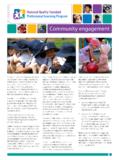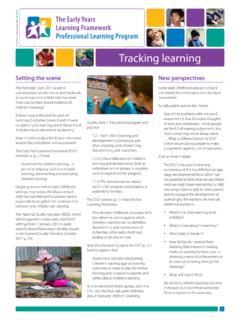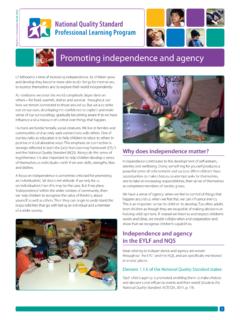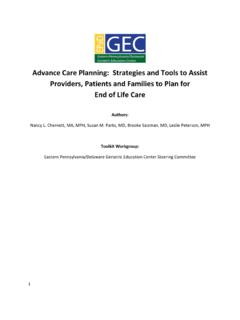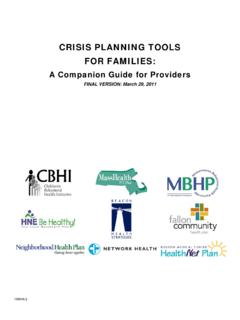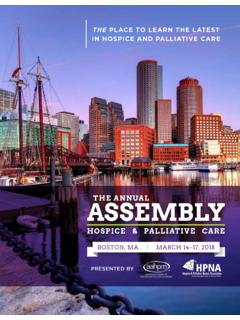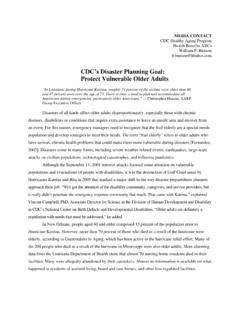Transcription of Planning the program - Early Childhood Australia
1 1 NQS PLP e-Newsletter 2013 Planning the programThis e-Newsletter is about Planning for children s learning. It follows directly from e-Newsletter No. 55, which focused on noticing and recording children s learning. Before educators can plan effectively, they need to know the children the National Quality Standard (NQS) saysThe Early Years Learning Framework (EYLF) uses the term curriculum to cover all the interactions, experiences, activities, routines and events, planned and unplanned, that occur in an environment designed to foster children s learning and development (p. 9). The Framework for School Age Care uses the same definition to describe the program (p. 6).The Guide to the National Quality Standard uses both curriculum and program .
2 Element asks educators to focus on progressing each child s learning and development towards the five Learning Outcomes when Planning the curriculum. Element states that Each child s current knowledge, ideas, culture, abilities and interests are the foundation of the program . Focus for Planning Planning the program is more than completing documentation that is displayed on a wall (or in a journal) outlining what will happen this week/fortnight. It is also about the process you go through to think about, decide and prepare for every aspect of children s experiences in the the introduction of the Frameworks, educators have moved away from Planning approaches where they planned far in advance, often using formats or templates that involved filling in boxes.
3 In contrast to that approach, some educators, inspired by the emergent curriculum approach, decided that there was no need for Planning , and that they could begin with a blank piece of paper and simply follow children s interests. That thinking represents a misunderstanding of the emergent curriculum approach: We are the stage directors; curriculum is the teacher s responsibility, not children s. People who hear the words emergent curriculum may wrongly assume that everything simply emerges from the children. The children s ideas are an important source of curriculum but only one of many possible sources that reflect the complex ecology of their lives. (Jones, Evans and Stritzel, p. 5)According to the Guide to the National Quality Standard, Planning involves observing, gathering and interpreting information about children to inform the preparation of environments and experiences that engage them and are meaningful for them.
4 It also involves reflecting on and documenting children s experiences and learning (p. 22).2 Quality Area 1 reminds educators very specifically that a learning framework needs to guide all aspects of pedagogical decision-making and everyday work. That means thinking about belonging, being and becoming, the Principles, the Practices and the Learning Outcomes in the EYLF. The five Learning Outcomes describe educators aims for all children. They are long-term goals that each child will move toward at their own pace. Educators use the Outcomes to plan for children s learning and development as well as to track children s need to include child-led and initiated learning as well as educator-supported and initiated learning opportunities.
5 The quotes that follow support this balance: Planning therefore, is a mix of what educators notice children are ready to learn and what children are personally interested in pursuing. (Kennedy and Barblett, p. 5) Some things worth knowing may never emerge from children s expressed or unexpressed interests. (Kennedy, quoted in EYLF PLP e-Newsletter No. 14, 2011, p. 5) Informed adults want children to learn about important ideas such as equity, sustainability and fairness for example; or key concepts in numeracy, literacy or science. You might learn these things through discovery , but you might not; and it would take a long time. (Connor, NQS PLP e-Newsletter No. 14, 2011, p. 5)Deciding on goals In the past, many educators used broad goals, often linked to developmental domains, as a focus for Planning .
6 Now, many educators choose one or two group goals or learning intentions, based on an EYLF Learning Outcome, as a broad focus for their Planning . These goals take account of the context of children s lives and of the the detail of the statements about the Learning Outcomes in the EYLF can help educators identify areas of learning where children need support. For example, when several children have recently commenced at the service or moved to a different room, the learning intention or goal might be for children to feel safe, secure and supported (Learning Outcome ). Educators would then plan ways to support children to feel a sense of educators plan for In addition to experiences that help children progress toward the broad goal or learning intent, educators plan for: indoor and outdoor environments so that, for example: materials are displayed in inviting and accessible ways for children to choose and extend their interests there are adequate resources and play spaces for the number of children children s and families cultures are acknowledged there is a balance between active and quiet experiences specific resources to follow up individual children s interests are available.
7 Experiences that build on children s interests individual children s learning and development all aspects of the day (arrivals, settling, eating, resting, toileting, transitions, groups).3 Examples of approaches to Planning the programJenny Allen is the Educational Leader at Central Carlton Children s Centre. Jenny s long-term goal in 2013 is for children to become independent thinkers and learners and for adults and children to share their thinking and learning, building a community of lifelong learners. She uses the EYLF to identify key learning areas to achieve this goal: wellbeing, learning, identity, sustainability and environmental studies, the arts, science and technology, mathematics and literacy. Jenny decides on objectives or intentions for each learning area and links them to the relevant Learning Outcome.
8 For example:IDENTITYFor children to develop a sense of autonomy and a sense of agency and begin to work cooperatively with others. MATHEMATICSFor children to begin to understand key numeracy concepts for example recognise numerals and count the number of objects to match the numeral (one-to-one correspondence), spatial concepts, sorting and categorising, patterns. She writes these objectives/intentions on a whiteboard and plans experiences based on them. She records child-initiated and led learning as it occurs. Photographs of the board are a permanent record of the said, The whiteboard makes the teaching and the learning more visible for families and we have found that they are more willing to write comments directly onto the board.
9 We wonder if it has something to do with the fact that a comment on a whiteboard doesn t seem as permanent as writing on a paper document. Recording their intentions and using the whiteboard have evolved over the last six months, as the team continually reflects on their approaches to Planning and documenting the Bradshaw is the Director at North Fitzroy Childcare Co-operative. She has been leading educators in reflecting on how they plan. Alison believes that the beliefs, values and principles in the philosophy guide every aspect of decision-making. In reviewing their philosophy statement, they are discussing beliefs about how children learn and how different theorists have impacted on their thinking and practice. This review is likely to lead to changes in the way they plan and document children s team chooses a group goal based on a Learning Outcome as the broad focus for their Planning .
10 Through group reflections, educators decide whether they will continue with that goal or choose another one. Educators plan ways to support children s progress in relation to the broad goal. They also incorporate supporting individual children s interests, learning and development and group interests. Sometimes Planning is based on an educator s interests or input from families. For example an educator had a strong connection to ANZAC Day and wanted to introduce it to children, linking it to identity and connecting to community. She invited families to contribute photographs or memorabilia to share with the children. This resulted in a display of medals, photos and uniforms that inspired great interest and discussions. This focus has extended to a general focus on grandparents and document the program through notes about children s learning, a web to record children s evolving interests and general reflections and ideas for Planning .



